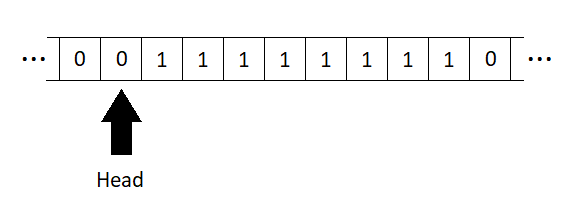

This is a collection of computer science related definitions and terminology.
| Tape | Program | ||||||||||||||||||||
|---|---|---|---|---|---|---|---|---|---|---|---|---|---|---|---|---|---|---|---|---|---|
 |
|
blank = " ";.C scale = "C", "D", "E", "F", "G", "A", "B";.digit without zero = "1" | "2" | "3" | "4" | "5" | "6" | "7" | "8" | "9";.digit = "0" | digit without zero;
integer = "0" | ["-"], digit without zero, {digit};natural numbers without zero = integer - ("0" | "-", digit without zero, {digit}).meaning of universe = "4","2" | ?This is the meaning of the universe?.(* This is a comment in EBNF. *)